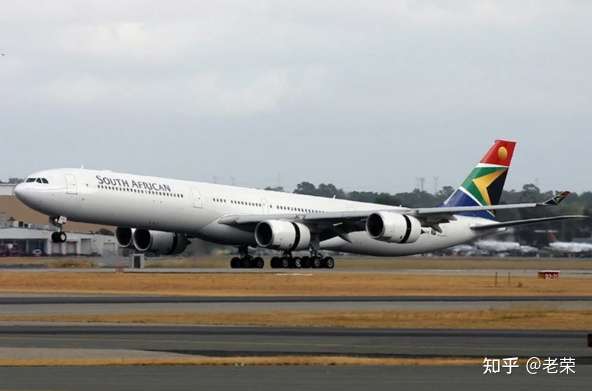Many entrepreneurs start their business with little more than a dream and a shoestring budget. In fact, some business models require very little up-front costs, and at Shopify, we’ve personally witnessed the success of countless entrepreneurs with humble beginnings. But among the small businesses that get their business off the ground and don’t last, more than a third cite a shortage of cash as the reason.
We wanted to understand: how much does it cost to run a business—really? And do aspirational entrepreneurs have any misconceptions about what those costs will look like in their first year of business?
How much does it cost to run a business?
According to our research, small business owners spend an average of $40,000 in their first full year of business.
This doesn’t mean you need $40,000 in cash lying around to start a small business. In fact, for many founders, first-year costs are incurred in the process of earning business—and revenue is reinvested from the business to cover expenses. Not to mention, businesses with employees spend a lot more than solopreneurs, which skews this number higher. But more on all that later. We also asked our respondents to take it one step further—we had them look back at their first-year records and tell us how much money they allocated to various business expenses as a percentage of their total budget. To keep it simple, we bucketed the following business functions and cost categories for them:
- Product: raw materials, inventory, supplier, manufacturing, patents, etc.
- Operating: incorporation/legal fees, additional software, accounting, etc.
- Online store: website/platform subscription, hosting/domain, contract developer/designer, etc.
- Shipping: packaging, labels, etc.
- Offline: stall/table fees, rent, gas, etc.
- Team/Staff: salaries, benefits, perks, etc.
- Marketing: logo, branding, ads, printed materials, etc.
 What our research shows
What our research shows

In their first year, small businesses spent:
- 11% on operating costs
- 10.3% on marketing costs
- 9% on online costs
- 31.6% on product costs
- 8.7% on shipping costs
- 18.8% on team costs
- 10.5% on offline costs
It’s important to note that the amount businesses spent in their first year varied significantly, depending on factors like industry and business model; whether the business was a full-time, part-time, or hobby venture; and whether the business had any employees. But more on that later.
Sources of financing for early-stage founders
While new entrepreneurs often rely on their personal savings to keep their business afloat in the early days, one-third of respondents reported reinvesting revenue from their business sales to cover their business costs in the first year.
 What our research shows
What our research shows
Top funding sources for business owners:*
- Personal Savings (66%)
- Reinvesting revenue from sales (30%)
- Financial support from friends and family (23%)
- Personal Loan (21%)
* Respondents could select more than one funding source
 Why it matters
Why it matters
Accepting that your first year of business may not be hugely profitable is important for financial planning—and mental preparation. In many cases, founders are the last to be paid in their first year as all of the company’s revenue goes back into the business. And that’s perfectly normal.
For the companies that are struggling to make any sales in their first year, creating a comprehensive financial plan outlining how much you’re going to need and what you’re going to use it for will make it easier when you’re applying for a bank loan or raising money. Don’t think of this as taking on debt—expenses are incurred in order to generate revenue, so the return on your investment will likely be greater than the upfront costs.
How much businesses spend in their first year depends on the size of their team
Perhaps unsurprisingly, having employees dramatically increases overall spending. If you choose to go the solopreneur route, you can spend less than one-third what businesses with employees spend.
 What our research shows
What our research shows
- Business owners with zero employees spent $18,000 in their first year.
- Business owners with one to four employees spent $60,000 in their first year.
Unexpected costs in the first year
Beyond fixed costs, business owners also noted common one-time costs that sprung up in their first year and warned of hidden expenses to look out for.
 What our research shows
What our research shows

The most-cited unexpected costs of running a business were:
- Shipping. 34% of businesses cited packaging costs, damaged or returned items, and general shipping fees. This was particularly painful for businesses with low shipping volumes in the early stages.
- Legal. 23% of businesses cited one-time startup costs like insurance, licenses, and permits as unexpectedly costly. They were also surprised that they were charged to incorporate both state-wide and federally in the US.
- Inventory and product. 21% of businesses said that costs associated with their inventory, such as product testing and receiving and returning defective products, as well as surplus inventory, could quickly rack up bills.
- Taxes and accounting. In the qualitative component of our study, business owners repeatedly mentioned taxes and accounting as painfully cumbersome—and worth hiring professional help for.
 Why it matters
Why it matters
The more you know! Recurring expenses and fixed costs are only part of your financial plan—hidden costs, one-time costs, and variable costs also need to be planned for in advance. What happens if an unexpected event, like COVID-19, throws off your projections? It’s always a good idea to do some contingency planning and set aside a cash reserve, just in case.
Aspirational entrepreneurs overestimated online costs
When we asked our aspirational entrepreneurs how much they thought their first year of business would cost them, they wholly overestimated in one area: they expected online costs to be more expensive than established business owners reported.
 What our research shows
What our research shows

- Aspirational entrepreneurs expected to spend 12% of their budget on online costs in their first year.
- Business owners reported spending only 9% of their budget on online costs in their first year.
 Why it matters
Why it matters
Beyond ineffective budgeting, entrepreneurs who expect to spend more may end up paying more than they have to. The rationale is simple: if entrepreneurs are going into business expecting to spend more on service, what they’re willing to pay for said service goes up accordingly.
It’s important that entrepreneurs do their research when choosing to hire designers or developers to avoid being overcharged—or opt for an eCommerce provider that vets and curates experts for you.
The perceived cost and complexity of launching an online business continue to be a salient barrier to entry for many aspirational entrepreneurs. But it’s largely unfounded. For Shopify’s part, our core ethos—or raison d’être, if you will—is to enable precisely those entrepreneurs who don’t have coding or design skills to build an online store. And to do so affordably.
Wrapping up
We at ShopShipShake have been working with businesses like yours with fulfilling experiences. We offer one-stop services, including an efficient supply chain, over 10 thousand of China’s suppliers, and more.
With a successful track record of over 20,000 clients, we are sure to deliver your orders requirements. Let’s get in touch to build, sustain, and grow your businesses.
If you would like to know more details about us, please contact with us:



